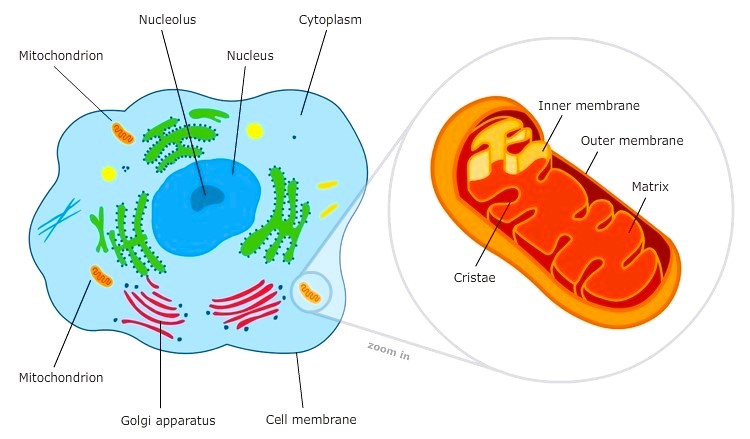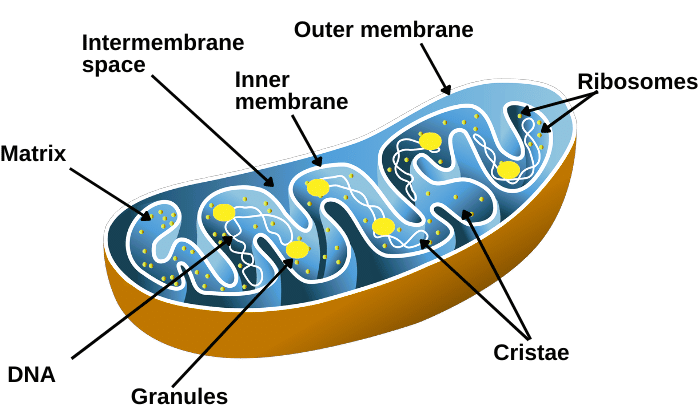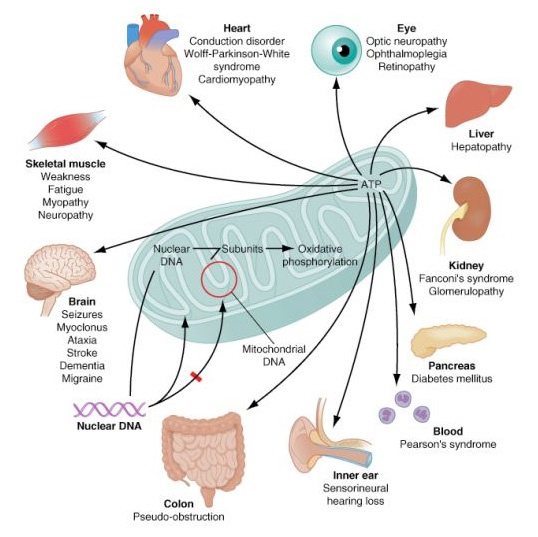What is Mitochondria?
The term ‘mitochondrion’ is derived from two Greek words “mitos” and “chondrion” which means “thread” and “granules-like”, respectively. Mitochondria is biology terminology that is popularly known as the “Powerhouse of the cell”.
Mitochondria is a double membrane-bound organelle found in most eukaryotic( organisms whose cells have a nucleus)organisms. Mitochondria is found inside the cytoplasm and essentially functions as the cell digestive system.
Mitochondria plays a significant role in breaking down nutrients and generating energy-rich molecules for the cell. Many of the biochemical reactions that are involved in cellular respiration takes place within the mitochondria.
Mitochondria- Definition
Mitochondria are considered membrane-bound organelles present in the cytoplasm of all eukaryotic cells that produce adenosine triphosphate (ATP), the main energy molecule used by the cell.
Mitochondria often referred to as the “Powerhouse of the cell, ” were first discovered in 1857 by one physiologist, Albert Von Kolliker. Mitochondria was later coined by the name of “Bioblasts” which means life germs by Richard Altman in 1886. Twelve years later, the organelles were then renamed ‘Mitochondria’ by Carl Benda.
Mitochondria –Location

Mitochondria are found in all body cells, with very few exceptions. There are usually multiple mitochondria that are found in one cell, depending upon the function of that type of cell. Mitochondria are located in the cytoplasm of cells along with all other organelles of the cell.
Mitochondria are structures within the cells that convert the energy from food into a form that cells can use. Each cell contains hundreds to thousands of mitochondria, which are located in the fluid that surrounds the nucleus which is the cytoplasm. Although most DNA is packed in chromosomes within the nucleus, mitochondria also have a small amount of their DNA. This genetic material is referred to as mitochondrial DNA or mtDNA. In humans, mitochondrial DNA spans about 16,500 DNA building blocks or base pairs, representing a small fraction of the total DNA in cells.
Mitochondrial DNA contains 37 genes, all of which are very essential for normal mitochondrial function. Thirteen of these genes provide accurate instructions for making enzymes involved in oxidative phosphorylation. Oxidative phosphorylation is a process that uses oxygen and simple sugars to create adenosine triphosphate (ATP) which is the cell’s main energy source. The remaining genes provide instructions for making molecules called transfer RNA or tRNA and ribosomal RNA or rRNA, which are chemical cousins of DNA. These types of RNA help assemble protein building blocks or amino acids into functioning proteins.
Mitochondria- Structure

- The mitochondrion is a double-membraned, rod-shaped structure found in both plant and animal cells respectively.
- Its size ranges from 0.5 to 1.0 micrometres in diameter.
- The structure comprises an outer membrane, an inner membrane, and a gel-like material referred to as the matrix.
- The outer and inner membranes are made of proteins and phospholipid layers separated by the intermembrane space.
- The outer membrane has a large number of special proteins referred to as porins which also cover the entire surface of the mitochondrion.
- Mitochondria split into different regions, each of which carries out distinct roles.
Mitochondria Diagram

Functions of Mitochondria
Important Functions of Mitochondria are given below:
- It generates energy for various activities of the cell. It is known as the powerhouse of the cell.
- Mitochondria are sites of cellular respiration. They release energy required by the cell in the form of ATP (Adenosine Triphosphate). This ATP is known as energy currency of the cell.
- Whenever the cell requires energy, ATP molecule breaks down. It generate energy to be used for metabolic activities of the body.
- Mitochondria are strange organelles in the sense that they have their own DNA and ribosomes. Hence, they are able to make some of their own proteins.
- They provide intermediates for the synthesis of various chemicals like fatty acids, steroids, amino acids etc.
Also Check – 10 Important Functions of Mitochondria
Disorders of Mitochondria

- Mitochondrial disorder, or mitochondrial disease, refers to a group of diseases that affects the mitochondria, which are tiny regions present in almost every cell of the body.
- The mitochondria’s prime function is to produce energy. More mitochondria are needed to generate more energy, particularly in high-energy demand organs such as the muscles, heart and brain.
- When the number or function of mitochondria in the cell are destroyed, less energy is produced which results in organ dysfunction.
- Depending on which cells within the body have destroyed mitochondria, different symptoms may occur. Mitochondrial disease can cause a vast array of health concerns, including weakness, fatigue, metabolic strokes, seizures, cardiomyopathy, arrhythmias, developmental or cognitive disabilities, diabetes mellitus, impairment of hearing, vision, growth, liver, gastrointestinal, or kidney function, and more.
- These symptoms can appear at any age from infancy up until late adulthood.
Also Check – Why is the Mitochondria called the Powerhouse of the Cell
Also Check – 9 Important Difference Between Golgi Bodies and Mitochondria
Also Check – 16 Important Differences between Prokaryotic and Eukaryotic cell


10 Comments on “Mitochondria Class 9 – Definition ,Structure, Location, Functions, Diagram and Disorders”